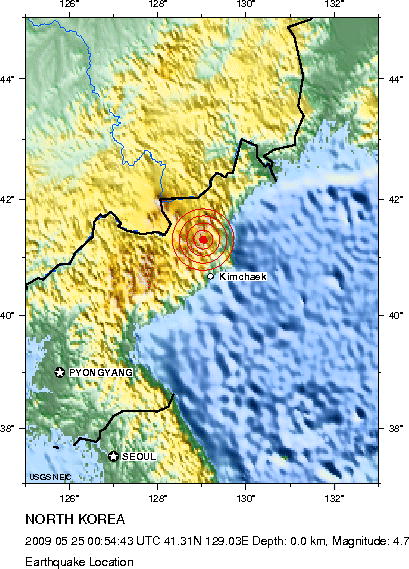The Peninsula
Is there a Connection between North Korea’s Nuclear Tests and Seismic Activity?

By Juni Kim
At approximately 7:20 a.m. on January 2nd, a minor 2.8 magnitude earthquake was detected by seismologists close to the Punggye-ri nuclear test site in North Korea. Although the last nuclear test occurred in September 2017, Woo Nam-cheol, the Korean Meteorological Administration’s geological analyst in South Korea, attributed the quake to the after-effects of the 2017 nuclear test. This latest quake follows a string of tremors throughout late 2017 and 2018 that have been detected in the area since the sixth nuclear test occurred.
This recent earthquake re-elevated questions around whether nuclear testing can trigger substantial seismic activity. While some researchers have warned of the possible seismic after-effects of nuclear testing, others have expressed skepticism that underground nuclear testing can directly cause a significant earthquake or volcanic eruption.
When the September 2017 test occurred, the U.S. Geological Survey registered the explosion’s tremor at a 6.3 on the Richter scale, which approximates to a moderate-to-strong earthquake in intensity. Since then, researchers have recorded a number of smaller quakes in close proximity to the Punggye-ri test site. Dr. Won Young Kim of Columbia University published a paper titled “Identification of Seismic Events on and Near the North Korean Test Site After the Underground Nuclear Test Explosion of 3 September 2017” looking into nearby seismic activity since the last test. In an interview with Inverse, he stated based on his findings, “It’s not 100 percent sure, but I think somehow that the nuclear test was so large that it triggered these small seismic events to the north of the area.”
Beyond these smaller tremors, experts have yet to directly attribute a sizeable earthquake in the area to the nuclear test. However, various reports in April 2018 indicated that one of the underground test cavities at Punggye-ri collapsed due to the effects of the September 2017 test. A study conducted by the University of Science and Technology of China (USTC) stated that the site may no longer be useable for future nuclear tests, though it has not been definitively determined that is the case. Regardless of the site’s current usability, scientists have cautioned on the environmental effects of possible future tests, which the researchers at the USTC stated, “would produce collapses in an even larger scale creating an environmental collapse.”
The possible seismic hazards from North Korean nuclear testing have also prompted researchers to look into the potential effects on Mt. Baektu, a nearby volcanic mountain in North Korea’s northern territory. Dr. Eunseo Choi, a researcher at the University of Memphis’ Center for Earthquake Research and Information, co-authored a paper in Nature that cautioned, “North Korean nuclear explosions are expected to produce pressure changes of tens to hundreds of kilopascals, causing concern over the possible triggering of a volcanic eruption.”
Despite warnings from researchers of these dangers from nuclear testing, other commentators have expressed skepticism at the exact causation of seismic activity following nuclear tests. Commentary by 38 North cited historical examples of nuclear testing and nearby volcanic activity, and concluded that there lacks sufficient evidence indicating that nuclear tests can trigger a volcanic eruption. An article by the United States Geological Survey also concluded that “transient strain from underground thermonuclear explosions is not sufficiently large to trigger fault rupture at distances beyond a few tens of kilometers from the shot point.”
Future tests may provide scientists with more evidence to look at the relationship between nuclear tests and seismic activity. For now, with North Korean leader Kim Jong Un’s proclamation that his country’s nuclear weapons development is “complete” and his current openness to diplomatic engagement, it is unlikely we will see another nuclear test in the near future.
Juni Kim is the Program Manager and Executive Assistant at the Korea Economic Institute of America (KEI). The views expressed here are the author’s alone. Graphics by Juni Kim.
Picture from Wikimedia Commons, user Wolf-Dieter
